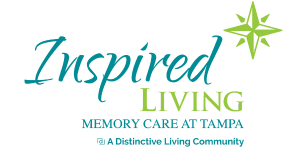Key Takeaways
- Changes in personal care, medication management, and nutrition can be early indicators that more support is needed.
- A decline in home maintenance, increased safety concerns, and social withdrawal can be subtle yet significant signs.
- Growing strain on family caregivers suggests it may be time to explore professional senior living options.
- The right level of care depends on individual needs, from assisted living for daily help to memory care for cognitive support.
Deciding when to explore senior living options for a loved one is a conversation many families have. It’s often a journey of noticing small changes over time that begin to paint a larger picture.
Learning how to deal with dementia in a parent and understanding what it means for their daily life is a key part of this process.
Recognizing the signs that it’s time to consider memory care early can help you and your family thoughtfully consider the next steps toward a supportive living environment.
Changes in Daily Health and Personal Care
1. Needing Help with Everyday Tasks
You may notice a loved one having more difficulty with activities such as dressing, bathing, or personal grooming. These essential self-care tasks, often referred to as activities of daily living (ADLs), might be becoming physically taxing for them to complete on their own.
When your loved one struggles with their daily routine, it’s often a sign that a little extra help during the day would be beneficial.
2. Challenges with Managing Medications
Discovering missed doses or seeing your loved one confused about medication schedules can be concerning. They may need support understanding their medications, when to take them, and how to manage them safely.
An organized system in a senior living community or specialized memory care can offer valuable support with a structured approach to wellness.
3. Declining Nutrition or Unexplained Weight Loss
You might notice a lack of interest in cooking or that grocery shopping has become a challenge. Changes in eating habits can affect overall health and well-being.
If you’re looking for tips on increasing appetite, many senior living communities also offer structured, nutritious meal options, relieving the daily pressure of meal preparation while providing a wonderful dining experience.
Shifts in the Home Environment and Personal Safety
4. Neglected Household Upkeep
A once-tidy home may start to appear cluttered, or you might notice that mail is piling up. Tasks like cleaning, laundry, or general home maintenance become overwhelming.
A move to a senior living community means your loved one no longer has to worry about these chores and can focus on what brings them joy.
5. Increased Falls or Mobility Challenges
Frequent falls or general unsteadiness can be a major source of worry for older adults and their families. Regular physical activity can help reduce this risk.
The household layout is another common safety risk, such as stairs or narrow hallways. A community designed for accessibility can provide a safer setting.
6. Poor Judgment That Affects Safety
You might observe decisions that could compromise a person’s well-being, like forgetting to turn off appliances or having difficulty managing finances.
These moments can indicate a need for a more supervised senior living environment. Access to 24/7 support in a senior community helps provide support while still encouraging independence.
Social Well-Being and Family Support
7. Growing Social Isolation
It’s common for a loved one to withdraw from social activities or friends as they get older. They may avoid going out or participating in events due to mobility issues, a lack of transportation, or health challenges.
A community setting with a calendar of engaging activities and events offers daily opportunities to connect and build new friendships.
8. Changes in Mood or Behavior
Have you noticed increased irritability or a lack of interest in hobbies your loved one once enjoyed? These shifts can sometimes be linked to loneliness or the frustration of struggling with daily life. A supportive community can help re-engage a person in fulfilling activities.
9. Family Caregivers Feeling the Strain
It’s important to recognize when providing care has become emotionally or physically draining. Experiencing caregiver burnout is a signal to seek support.
Exploring options like respite care can help caregivers take a much-needed break or time to plan around changes. Shifting the primary caregiver role allows families to focus more on quality time together.

When Should You Consider Professional Guidance and Support?
Consult with Your Loved One’s Doctor About Senior Living
Sometimes, a healthcare professional will recommend a more supportive living arrangement. Their input can be a helpful and reassuring part of the decision-making process. It can open the door for a productive family conversation.
How Do You Know if Assisted Living or Another Level of Care Is Needed?
The right choice depends on your loved one’s specific needs. Consider the following:
- Assisted living is often suited for those who are mostly independent but need help with some daily activities
- Individuals with progressive cognitive changes might find more appropriate support in a memory care setting
- Seniors with complex medical needs that require round-the-clock attention may need a different level of care
Taking the Next Steps Together
How to Start the Conversation
Approach the topic with sensitivity and empathy, focusing on support rather than control. Involve your loved one in the process from the beginning to empower them in their choices. It’s also helpful to plan for multiple discussions rather than trying to decide everything at once.
Exploring Senior Living Communities
As you begin to look at options, a few simple steps can make the process smoother.
- Gather important documents
- Have financial and health-related paperwork organized to help you understand available financial resources and payment options
- Decide on lifestyle and care priorities
- Discuss what is most important for your loved one in a new home, such as location, activities, or dining
- Visit communities
- Schedule visits—multiple times, when possible—to get a feel for the environment and ask any questions you may have
Allowing Time for Adjustment
Acknowledge that moving is a significant life change, and feelings of uncertainty are normal. It can take some time for your loved one to settle into a new routine and build new friendships. Regular visits and encouragement from family can help make the transition smoother.
The goal is always to find a supportive environment that enhances well-being and promotes independence.
Discover the Benefits of an Inspired Living Community
Moving to a community can allow families to spend more meaningful time together, free from the demands of day-to-day caregiving. At Inspired Living at Tampa, we’re here to help you and your loved one thrive.
If you see some of these signs in your loved one, we’re here to help you explore your options. Contact us today to learn more or to schedule a personal tour.









